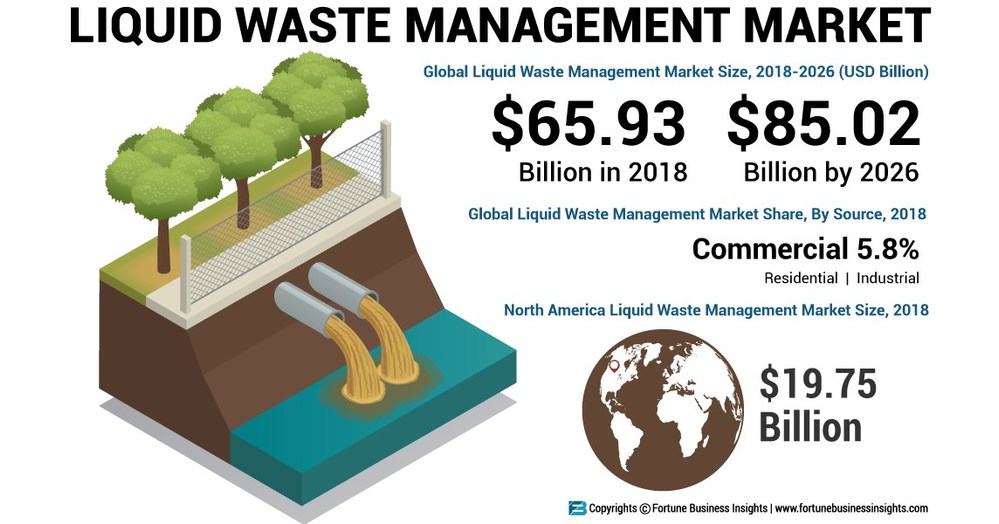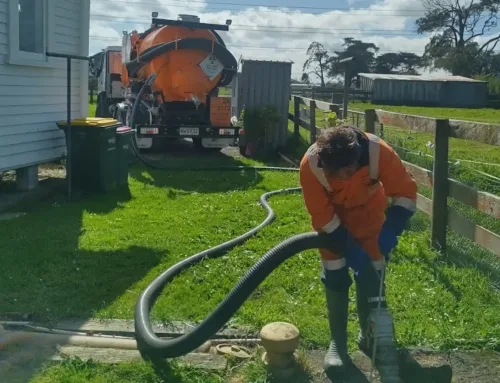Get This Report about Reclaim Waste
Get This Report about Reclaim Waste
Blog Article
The Reclaim Waste Statements
Table of ContentsFascination About Reclaim WasteReclaim Waste Can Be Fun For EveryoneReclaim Waste for DummiesGetting The Reclaim Waste To WorkTop Guidelines Of Reclaim Waste
Check out the types, events, and types of liquid waste. Residential sewage waste describes the waste and products from a residential septic container. This sort of waste is created by human beings in homes, schools, and various other buildings. This only consists of septic storage tanks that have a drain area. The appropriate management and disposal of residential sewage waste need liquid waste to be moved to a sewage treatment plant where the proper techniques and equipment are related to purify and dispose of waste.
Commercial waste usually consists of potential dangers, such as flammable materials or a blend of fluid and solid waste products, and needs an extra advanced and comprehensive disposal procedure. The disposal of business waste generally includes the purification of waste prior to transport to ensure risk-free and appropriate disposal. Hazardous waste is developed from byproducts and runoff of industrial processes and production.
This type of waste can not utilize the very same sewer management transportation or processes as septic or industrial liquids. The hazardous waste management process requires the evaluation and testing of liquid waste prior to it undertakes the disposal procedure (liquid waste removal melbourne). Drainage waste is the fluid waste that originates from drainage and excess stormwater in highly inhabited areas or cities
Overflow waste can trigger contamination and flooding otherwise handled appropriately. Find out more regarding sewage system cleaning and waste management. Making certain proper waste administration can avoid disasters and minimize environmental harm. Both people in domestic settings and professionals in commercial or production industries can gain from understanding the procedures and laws of fluid waste administration.
The 8-Minute Rule for Reclaim Waste
Call PROS Providers today to find out about our waste monitoring and disposal solutions and the correct methods to care for the fluid waste you create.
(https://businesslistingplus.com/profile/reclaimwaste1/)Do you recognize what happens to your water when you disengage, flush the commode or drain the cleaning maker? No? Well, it deserves knowing. This so-called 'wastewater' is not only an essential resource however, after treatment, will certainly be launched to our land, waterways or the sea. Used water from toilets, showers, bathrooms, kitchen area sinks, washings and industrial procedures is referred to as wastewater.

water made use of to cool equipment or tidy plant and devices). Stormwater, a kind of wastewater, is overflow that moves from agricultural and metropolitan locations such as roofings, parks, yards, roads, paths and seamless gutters into stormwater drains, after rainfall. Stormwater flows untreated directly to neighborhood creeks or rivers, at some point getting to the sea.
Reclaim Waste Fundamentals Explained
In Queensland, most wastewater is treated at sewage treatment plants. Wastewater is moved from domestic or industrial sites through a system of sewers and pump stations, called sewerage reticulation, to a sewage treatment plant. Regional governments develop, preserve and operate most sewage treatment plants. Operators are certified under the Environmental Management Act 1994 to discharge treated wastewater at an appropriate ecological criterion into waterways.
The Division of Natural Resources encourages regional governments about managing, operating and keeping sewage systems and treatment plants. In unsewered areas, city governments might need homeowners to install individual or household sewage therapy systems to deal with residential wastewater from commodes, cooking areas, restrooms and washings. The Division of Natural Resources authorizes the use of family systems when they are verified to be effective.
In some new communities, therapy of some stormwater to remove trash, sand and gravel has started utilizing gross toxin traps. Wastewater therapy occurs in 4 phases: Eliminates strong matter.
Wastewater after that flows right into huge storage tanks where solids settle and are gotten rid of as sludge. Grease and scum are skimmed from the surface area. Uses little living organisms referred to as micro-organisms to damage down and remove continuing visit the site to be liquified wastes and fine particles. Micro-organisms and wastes are incorporated in the sludge. Gets rid of nitrogen and phosphorus nutrients that can cause algal blooms in our waterways and intimidate aquatic life.
Our Reclaim Waste Diaries
Nutrient elimination is not readily available in all sewage therapy plants due to the fact that it requires expensive specialized equipment. It is coming to be a lot more usual in Queensland. Clear liquid effluent created after therapy might still have disease-causing micro-organisms. If this effluent is launched right into rivers such as rivers or the sea, the micro-organisms will eventually pass away out.

Many wastewater moves into the sewage system. Under the Act, regional governments provide approvals and permits for environmentally pertinent activities (Periods) including wastewater launches that may have a local effect.
Reclaim Waste Things To Know Before You Get This
Or else, examples are taken for lab evaluation. Commonly several tests are required to develop the levels of each of the various contaminants such as oils, hefty steels and pesticides in water. Surveillance provides accurate info about water high quality and can validate that licence conditions are being satisfied. The details acquired via tracking gives the basis for making water quality decisions.
Report this page